Sights and Activities
Below are the places we saw and activities completed while visiting Italy:
Naples
Porta Capuana: an ancient city gate built in the 15th century.
Duomo Cathedral: built in the 13th century, it is the spiritual heart of the city and has a 19th century neo-Gothic façade.
Chiesa del Gesu Nuovo: originally built as a palace in 1470, it was later sold to the Jesuits who built the church. The uniqueness of the church is its ashlar façade giving it a rustic look.
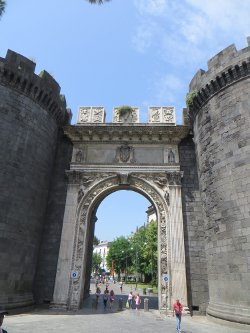


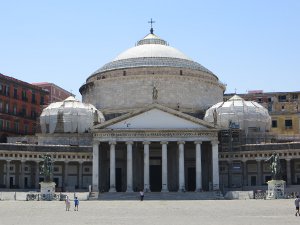
Piazza del Plebiscito: the city’s grandest piazza, with the red Palazzo Reale on one side, which was the official residence of the Bourbon and Savoy kings.
Castel dell’ Ovo: literally the Castle of the Egg, the location marks the eastern end of the seafront. The area used to be a small fishing village now taken over by restaurants and bars. We roamed around it to catch great views of the harbor.
Castel Nuovo: this 13th century castle overlooks the seafront and is one of the city’s landmark sites.
Pompeii: we roamed through this ancient town imaging what life was like 2000 years ago. The city was once a thriving commercial town until Mount Vesuvius erupted on August 24, 79AD and left the entire area buried under a layer of lapilli (burning fragments of pumice stone) and killing some 2000 people. The Unesco-listed ruins and a number of body casts provided us of a remarkable model of a working Roman city. The body casts were made in the late 19th century by pouring plaster into the hollows left by disintegrated bodies.
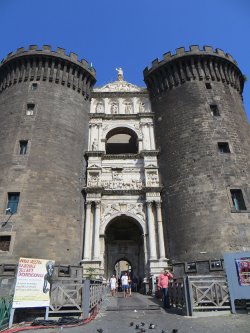
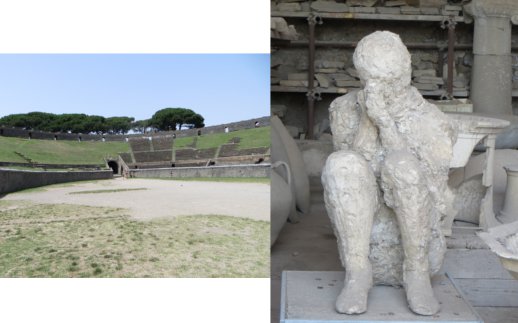
Rome
Colosseum: the city’s iconic monument is a thrilling site. At its prime, it sat 50,000 people and was ancient Rome’s most feared arena. The Colosseum was started by Emperor Vespasian in AD 72 and finished by his son Titus in AD 80. Walking through the interior and exterior we can only imagine the spectacle of the recently finished travertine-clad walls, tiered seating, sand-covered arena, and underground chambers where animals were caged.
Piazza Venezia: the piazza mainly consists of the white marble mountain that is Il Vittoriano. The construction of it began in 1885 to commemorate Italian unification and honor Victor Emmanuel II and is also incorporates the tomb of the Unknown Soldier.
Campo de’ Fiori: for centuries this was the site of many public executions, now it hosts an outdoor market by day and at night an open-air bar.
Spanish Steps: this area is a hangout for local teens at night and visited by many tourists by day. They were named after the Spanish embassy, although the staircase, which was built with French money in 1725, leads to a French church!
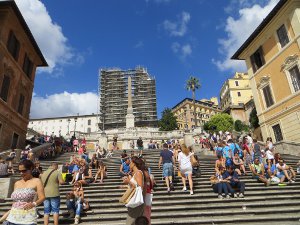
St Peter’s Square: the Vatican’s central piazza was designed by Bernini and laid out in the 17th century. In the center stands an obelisk brought to Rome by Caligula from Heliopolis, in ancient Egypt. When we came out of visiting the basilica, we ran into a crowd listening to Pope Francis speak from his balcony. As nonbelievers, it was a sight to see the many followers that were squeezed into the square.

St Peter’s Basilica: Italy’s biggest and richest church was built over the spot where they say Saint Peter was buried. The first basilica was consecrated by Constantine in the 4th century. In 1503, Bramante designed a new basilica, which took more than 150 years to complete. Michelangelo took over the project in 1547, designing the grand dome and inside, one of Italy’s most celebrated masterpieces, Pieta, the only work to carry his signature. We attended a Sunday morning mass where Gisela’s cousin did her first communion, although it was unprepared.
Palatino: this was ancient Rome’s poshest neighborhood and where it is believed that Romulus founded the city in 753 BC. The site is covered by the ruins of Emperor Domitian’s vast 1st-century complex.
Palatino: this was ancient Rome’s poshest neighborhood and where it is believed that Romulus founded the city in 753 BC. The site is covered by the ruins of Emperor Domitian’s vast 1st-century complex.
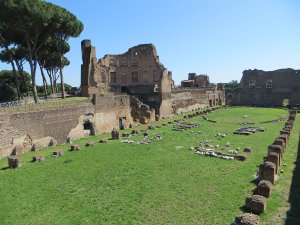

Roman Forum: the city continued to impress us with its many sites, the entire city was an open-air museum! These ruins were the social, political, and commercial hub of the Roman Republic.
Piazza del Campidoglio: this piazza sits atop the Capitoline Hill (Campidoglio), the lowest of Rome’s seven hills. In ancient times, this was the spiritual heart of the Roman Republic, home to the city’s two most important temples.
Vatican Museums: we spent hours exhibiting works of art from sculptures to contemporary art, but a visit to these museums is incomplete without seeing the Sistine Chapel. The definite highlight of anyone’s visit, the chapel was originally built in 1484 for Pope Sixtus IV, after whom it is named after, but it was Pope Julius II who commissioned Michelangelo to decorate it in 1508. Home to two of the world’s most famous works of art, Michalangelo painted the Genesis (Creation; 1508-12) and twenty-two years later painted the Giudizio universale (Last Judgement; 1534-41).
Piazza Navona: this piazza is centered by Bernini’s 1651 masterpiece, the Fontana dei Quattro Fiumi (Fountain of the Four Rivers).

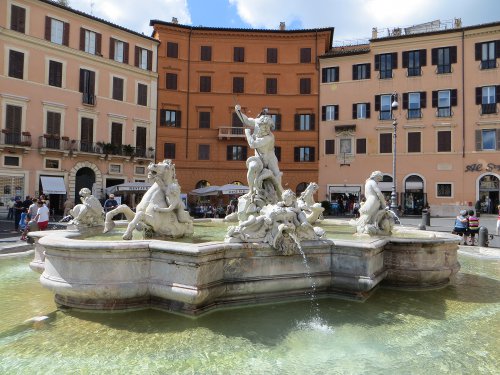
Pantheon: a striking 2000-year-old temple, now a church, is the best preserved of ancient Rome’s great monuments. In its current form it dates to around AD 120 when Emperor Hadrian built over Marcus Agrippa’s original 27 BC temple. The dome was the largest in the world until the 15th century and is still the largest unreinforced concrete dome ever built.
Trevi Fountain: the fountain was designed by Nicola Salvi in 1732 and depicts Neptune’s chariot being led by Tritons with sea horses representing the moods of the sea. Unfortunately, the fountain was under restoration when we visited, but we were able to catch a glimpse of its beauty through the scaffolding.
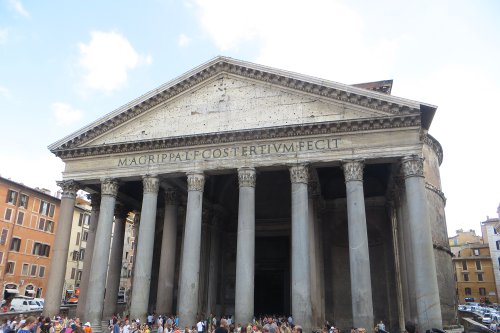
Piazza del Popolo: laid out in 1538, it was Rome’s northern entrance. Now surrounded by churches, in the south are twin 17th-century churches, Santa Maria dei Miracoli and Santa Maria in Montesanto, and on the other side of the square lies Chiesa di Santa Maria del Popolo.
Florence
Galleria dell’ Accademia: home to one of the Western world’s most famous sculpture, David, Michelangelo carved the giant figure from a single block of marble! Finishing it in 1504 when he was just 29.
Piazza Del Duomo: one of the world’s largest cathedrals officially named the Cattedrale di Santa Maria del Fiore, it was begun in 1294 by Sienese architect Arnolfo di Cambio and consecrated in 1436. Its unique red, green and white marble facade is a 19th-century replacement of the unfinished original and makes it one of our favorites in Italy.
Piazza della Signoria: dominated by Palazzo Vecchio, the historical seat of the Florentine government designed by Arnolfo di Cambio and built between 1298 and 1340. There is a statue of David outside the palazzo which is a copy of Michelangelo’s original, which stood here until 1873. The piazza also hosts an open-air showcase of sculptures from the 14th and 16th centuries.


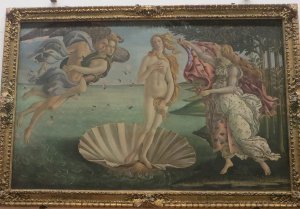
Galleria degli Uffizi: the world’s greatest collection of Italian Renaissance art houses the Medici family collection. To us, not the most interesting art, but the highlights included La nascita di Venere (Birth of Venus), Allegoria della primavera (Allegory of Spring), Leonardo da Vinci’s Annunciazione (Annunciation; Room 15), and Michelangelo’s Tondo doni (Holy Family; Room 25).
Ponte Vecchio: this 14th century bridge is lined with jewelry shops, but originally bordered by butcher shops. When the Medici family built a corridor through the bridge to link Palazzo Pitti with Palazzo Vecchio, they ordered that the butchers be replaced with goldsmiths.

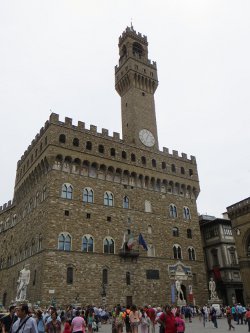
Piazzale Michelangelo: located on a hill just south of the city center this piazza has spectacular views of the city and contains a bronze replica of Michelangelo’s David.
Palazzo Pitti: we got an exterior view of this 15th century palace built for the Pitti family, great rivals of the Medici, which was bought by the Medici in 1549 and became their family residence.
Venice
Piazza San Marco: unfortunately, the piazza was not as splendid due to some partial flooding, but made for an adventurous wet visit. Still full of tourists and pigeons the piazza is dominated by the remarkable Basilica di San Marco, which sports spangled spires, Byzantine domes, luminous mosaics, and lavish marble work. The original chapel was destroyed by fire in AD 932 and a new basilica was consecrated in its place in 1094.

Venice Canals: when most cities boast large smog-producing highways, this city’s beauty is its canals, gondolas, and vaporetti (water buses). But, just like any beauty, it comes with a price, Venice is Italy’s most expensive city, and for the city itself the alleyways were not designed for up to 20 million visitors a year! Although riding the vaporetti along the main river ways exposed us to all the tourists, we were fortunate to still find areas that were not inundated with tourists by visiting the back lanes of the islands. The highlight of any Venice-visit is getting lost in the small canals and passing small picturesque bridges that connect the islands. Venice’s origins date to the 5th and 6th centuries, when barbarian invasions forced the Veneto’s inhabitants to seek refuge on the lagoon’s islands. Over successive centuries the Venetian Republic grew into a great merchant power, dominating half the Mediterranean, the Adriatic, and the trade routes to the Levant. It was from Venice that Marco Polo set out for China in 1271. Decline began in the 16th century and in 1797 the city authorities opened the gates to Napoleon who, in turn, handed the city over to the Austrians. In 1866 Venice was incorporated into the Kingdom of Italy.

